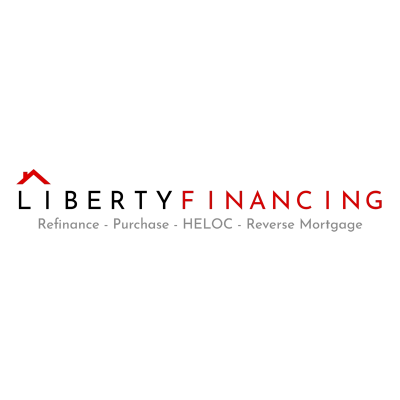How to Negotiate Better Prices: 7 Examples of Success
Unlock the secrets of successful price negotiations with this comprehensive guide, featuring practical examples and proven strategies. Gain an edge with invaluable insights from industry leaders who have mastered the art of striking a deal. From securing better lease terms to leveraging competitor quotes, discover how to turn negotiations into a win-win situation.
- Secure Better Lease Terms with Data-Driven Approach
- Propose Performance-Based Model for Lead Pricing
- Bundle Products for Volume Discounts
- Offer Upfront Payment for Price Reductions
- Use Competitor Quotes as Negotiation Leverage
- Negotiate Long-Term Contracts for Lower Rates
- Emphasize Value-Added Services in Price Discussions
Secure Better Lease Terms with Data-Driven Approach
One example of a successful negotiation I conducted involved securing more favorable terms for a corporate client in a commercial lease agreement. The initial terms proposed by the landlord included a fixed rental rate with annual increases, strict early termination penalties, and limited flexibility for modifications.
My approach to negotiation was strategic and data-driven. First, I conducted a market analysis of similar commercial spaces in the area to establish a benchmark for fair pricing. Then, I emphasized the client's long-term stability as a tenant and their positive financial standing, which reduced the landlord's risk. Additionally, I proposed a mutually beneficial compromise--agreeing to a longer lease term in exchange for a lower annual rent increase and more flexible termination clauses.
By demonstrating a well-researched and structured argument, I successfully negotiated a 15% reduction in the annual rent increase, a reduced security deposit, and a clause allowing early termination with minimal penalties. This approach not only secured cost savings for the client but also ensured flexibility in case of future business changes.

Propose Performance-Based Model for Lead Pricing
Negotiation is all about preparation and understanding the other party's priorities. One instance that stands out was when we renegotiated pricing with a lead provider for mortgage inquiries. We had been using their service for a while but noticed that lead quality varied, and the conversion rate wasn't justifying the cost.
Before approaching them, we gathered data on lead performance, compared it to competitor pricing, and identified areas where service could improve. Instead of simply asking for a discount, we proposed a performance-based model that offered a slightly lower base rate with incentives for high-quality leads. This approach showed we were invested in a long-term partnership rather than just looking for a price cut, and ultimately, we secured better terms that improved both cost efficiency and lead quality!

Bundle Products for Volume Discounts
Bundling products for volume discounts is an effective strategy in price negotiations. When purchasing multiple items, buyers can request a package deal that offers savings on the total cost. This approach benefits both parties: the seller increases their sales volume, while the buyer gets a better price per unit.
Sellers are often more willing to reduce prices when larger quantities are involved, as it helps them move inventory faster. This tactic can be particularly useful for businesses or individuals who regularly need various products from the same supplier. Consider exploring bundle options with your suppliers to maximize your savings on future purchases.
Offer Upfront Payment for Price Reductions
Offering upfront payment can be a powerful tool in securing lower prices during negotiations. Many sellers value immediate cash flow and may be willing to offer discounts in exchange for prompt payment. This approach reduces the seller's risk and administrative costs associated with delayed payments or installment plans.
For buyers, paying upfront might require more initial capital, but the long-term savings can be substantial. This strategy can be especially effective when dealing with smaller businesses or in industries where cash flow is crucial. Next time you're in a negotiation, consider proposing an upfront payment option to potentially unlock better pricing.
Use Competitor Quotes as Negotiation Leverage
Leveraging competitor quotes is a smart way to negotiate better deals with suppliers. By researching and obtaining quotes from multiple vendors, buyers gain valuable information about market rates and competitive offerings. This knowledge can be used as leverage when discussing prices with a preferred supplier. Presenting alternative quotes demonstrates that the buyer has done their homework and is serious about finding the best value.
It also gives the seller an opportunity to match or beat their competitors' prices to win the business. Remember to approach this tactic diplomatically to maintain good relationships with suppliers. Take the time to gather competitive quotes before your next negotiation to strengthen your position.
Negotiate Long-Term Contracts for Lower Rates
Proposing long-term contracts can be an excellent strategy for securing reduced rates in price negotiations. Sellers often value the stability and predictability that come with long-term agreements, making them more inclined to offer better prices. These contracts provide a steady revenue stream for the seller and can help them plan their resources more effectively.
For buyers, the benefits include locked-in lower prices and a reliable supply of goods or services. However, it's important to carefully consider the terms and potential market changes before committing to a long-term agreement. If your business has ongoing needs, explore the possibility of a long-term contract with your suppliers to potentially achieve significant savings.
Emphasize Value-Added Services in Price Discussions
Highlighting value-added services can be a compelling way to justify pricing during negotiations. This approach shifts the focus from purely price-based discussions to the overall value proposition. By emphasizing additional benefits such as superior customer support, faster delivery times, or customization options, buyers can demonstrate why a particular offer is worth its price.
This strategy is particularly effective when dealing with premium products or services where quality and reliability are crucial. Sellers who provide these extra services may be more resistant to price cuts but might be open to including additional value at the same price point. In your next negotiation, consider the full range of services offered and use them as talking points to secure a better overall deal.

